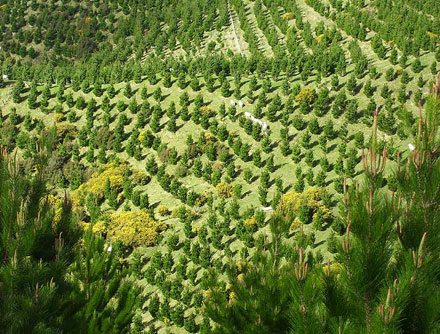
A report on the environmental impacts of forestry prepared for New Zealand’s Gisborne District Council recommends identifying some forest areas that should not be replanted after harvest. Source: Gisborne Herald
But chief science specialist Trevor Freeman told the council’s environmental planning and regulations committee that there were no easy answers to the problem of forest debris or slash.
The committee was discussing a report from Landcare Research on the environmental impacts of forestry. It adopted a recommendation by Mr Freeman to present the report to the East Coast Forestry Forum and engage with forestry interests to further develop the report’s recommendations.
Mr Freeman said the problems were not easily managed.
“The challenge is how we can avoid them, reduce their number and reduce the impacts they are having,” he said. “There is no simple fix and that is probably the key message out of the report.”
The East Coast Forestry Forum was the correct organisation to take the report to.
Mayor Meng Foon said his issue was the information the council provided on its website.
It was the public who were concerned and they wanted to know what to do about this. There had been positive steps such as traps in the river and retiring trees from houses.
Just a “101 on the web page” would be helpful to the community.
Mr Freeman said that was covered in the report with a recommendation to look at an educational program.
Craig Bauld said he found the report quite depressing.
They were given the task of looking at this and considering management of the problem.
“What they have come out with basically is six suggestions saying we can’t do anything about it but we can monitor it so much better.
“We can look at this, we can have national data, we can have all sorts of data but nothing that is actually useful doing anything and the thing they do say about doing anything is it’s bloody hard but it’s hardly new anyway.
“So I was disappointed in their paper. They came up with nothing.”
He read it that the council would tell people about it but there was no way to do anything.
Mr Freeman said the report was saying there were some things the council could do but they were to mitigate things.
The key ones were debris-catching structures in river beds, live plantings on flood plains and one they had been using for many years — managing the slash around landings.
“Those things are coming from you,” said Mr Bauld. “The report did not really tell us those things at all.”
Committee chairwoman Pat Seymour said what Mr Freeman had mentioned was what the industry itself was doing and it was detailed in an Eastland Wood Council document on debris flows. They recognised that the public and the council did not like to see these impacts.
Bill Burdett said from the point of view of someone who was up and down the Coast and seeing the rivers and beaches when they were in flood, there was very little done and actually practiced to mitigate the effects forestry was having.
There had been conferences and discussions but apart from the things Mr Freeman mentioned, there was very little being done by the industry although it would argue differently.
Mrs Seymour said the issue of 10-metre setbacks was relatively new. It had come about because of these concerns.
“You can’t change it overnight, you change it at a harvest. It is the same with the structures in the stream beds.”







